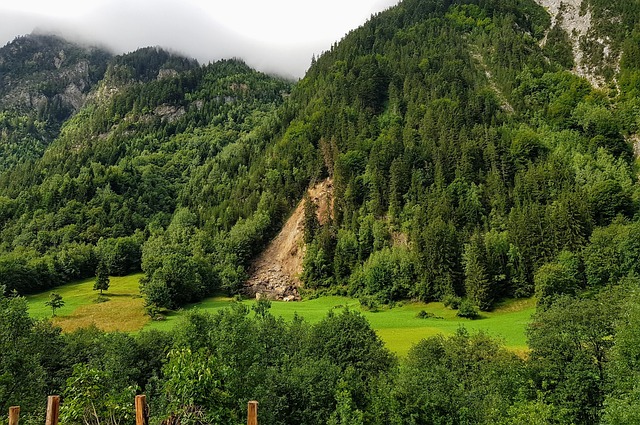The phenomenon of landslides in desertification zones is becoming increasingly prevalent, acting as a profound reminder of how climate change is altering the fabric of our environment. These regions, often characterized by their arid landscapes and lack of vegetation, are not merely barren wastelands; they symbolize a delicate equilibrium disrupted by human activity and climatic fluctuations. As temperatures rise and rainfall patterns shift, the very ground beneath our feet becomes unstable, triggering landslides that can devastate entire ecosystems.
Desertification itself is a process driven by a combination of anthropogenic factors such as deforestation, overgrazing, and poor agricultural practices, compounded by natural drought cycles exacerbated by climate change. When vegetation is stripped away, the soil loses its anchor, making it more susceptible to erosion and landslides. This chain reaction illustrates the interconnected nature of our environment: what happens in one area can have far-reaching consequences elsewhere.
Witnessing a landslide in a desertification zone is a stark reminder of the power of nature, but it is also a reflection of human negligence. Each slide uncovers layers of soil that had previously been stabilized by plant life, layers that are now vulnerable to further degradation. The loss of these soil layers not only contributes to the cycle of desertification but also impacts local wildlife and human communities that rely on a fragile ecosystem for their survival.
Moreover, the impacts of landslides extend beyond immediate geological changes. They can disrupt water systems, block access routes, and cause significant property damage. Communities may find themselves not only facing the loss of land but also struggling with food and water scarcity as the natural environment around them deteriorates. As a society, it is crucial to understand that these events are not just random acts of nature but rather symptoms of a larger crisis fueled by climate change.
Addressing the issue of landslides in desertification zones requires a multi-faceted approach. Sustainable land management practices are essential to restore the vegetation that can stabilize the soil and prevent landslides from escalating. Afforestation, improved agricultural methods, and effective water management strategies can all help build resilience against the forces of nature that are increasingly influenced by climate change.
Additionally, public awareness and education are vital in helping communities recognize the signs of desertification and the potential for landslides. By empowering individuals with knowledge, we can foster a culture of responsibility and prevent further environmental degradation. The link between landslides and climate change is not merely a scientific observation; it is a call to action for each and every one of us.
In a time when climate change poses unprecedented challenges to our planet, understanding the interplay between landslides and desertification becomes essential. By unraveling this connection, we are better equipped to mitigate the impacts and strive toward a more sustainable future. Our environment is a living entity, and with every landslide, we are reminded of the urgent need for stewardship and proactive engagement to ensure the health of our planet for generations to come.


